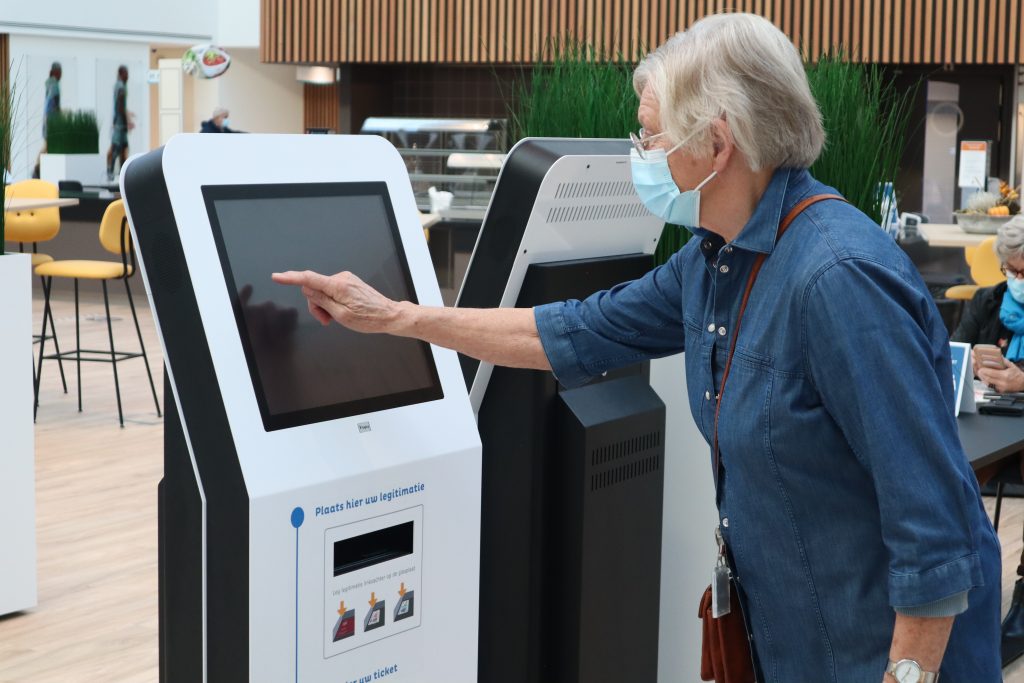The hospital wishes to offer its patients and visitors to the building the option of fast orientation, and to support their journey through the hospital with modern resources. “Digital check-in, payment at the self-service cashier and online home banking are all basic functionalities today. However, patient admission is still an analogue procedure in many hospitals. This often results in long and annoying queues and high administrative costs,” says Simone Tanger, Senior Project Manager of the new building. “We believed it could all be done differently and Logis.P helped us achieve that.”
Thanks to the modern digital patient guidance system, patients can now easily find their way around the renovated surgical clinic at the hospital. The patient guidance system comprises a digitised check-in and call process, as well as a so-called digital check-in point and 20 strategically placed narrow-casting monitors. The system is integrated with the existing hospital information system (ZIS) from SAP/i.s.h.med. The digital patient guidance system from Logis.P also significantly accelerates the check-in procedure and ensures a smooth administrative flow thanks to tight integration with the ZIS.
- Shorter waiting times
- Reduced administrative costs
- Checking in with insurance card
“We set up a special service for patients who are already registered and are visiting the hospital for, e.g. a follow-up consultation. They can check in digitally with their insurance cards, just like at the airport, and immediately go and wait in the designated waiting room.”
Simone Tanger, Senior Project Manager Heidelberg
Self-service linked to the ZIS
The implemented process is designed as follows: a central and clearly marked digital check-in point for emergency, as well as polyclinic and intramural patients. Here, the patients are registered, informed about subsequent steps and attended to. During the registration process, they receive all the necessary information about scheduled appointments, the location in the hospital and a call number by which they can be called in via large screens in various waiting rooms. In the Logis.P system, the number is automatically linked to the appointment in the ZIS, so that doctors and examination centres can call patients in directly via the ZIS.
“We set up a special service for patients who are already registered and are visiting the hospital for, e.g. a follow-up consultation. They can check in digitally with their insurance cards, just like at the airport, and immediately go and wait in the designated waiting room,” Tanger explains.
The first feedback from the examination centre personnel is positive. They are happy with the investment in the modernisation of their work processes.
Expandable in the future
Dr Hannes G. Kenngott, MSc. General, Visceral and Transplantation Surgery Heidelberg and the other stakeholders on the medical side of the construction view the in- and outflows at polyclinics as an integrated digital care process in which the patient occupies a central position.” He explains the decision to opt for the Logis.P system with the fact that, on the one hand, the system is scalable while, on the other, it can also be extended with all sorts of technical options that would help realise this vision. Some of the possible options being investigated by Heidelberg include patient registration and management by QR code or information exchange via mobile phones. That way, the patient could take a walk outside the waiting room or enjoy a cup of coffee to fill the waiting times while still being accessible for timely arrival at the appointment.






